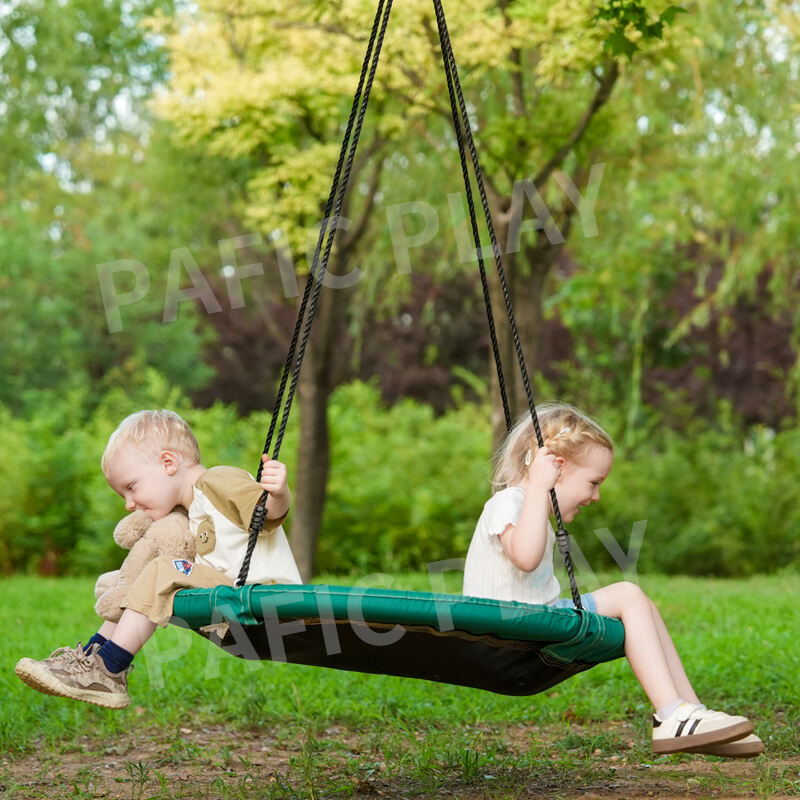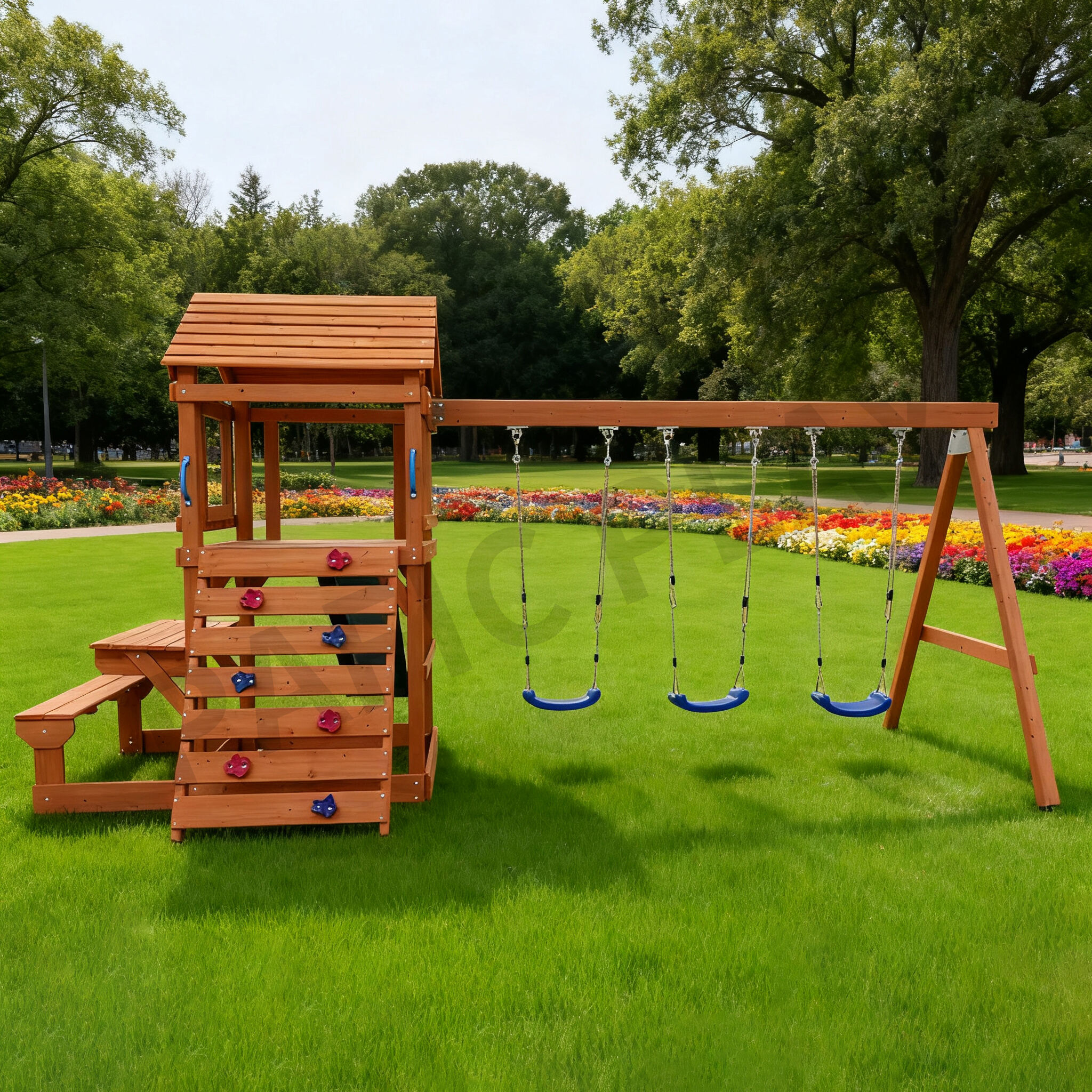The evolution of playground design has taken a remarkable turn toward sustainability, with eco-friendly outdoor playground equipment leading the charge in creating environmentally responsible play spaces. As communities become increasingly aware of their environmental impact, the demand for sustainable playground solutions has surged. These innovative play structures not only provide children with engaging recreational opportunities but also help preserve our planet for future generations.
Modern eco-friendly outdoor playground equipment represents a perfect fusion of durability, safety, and environmental stewardship. By incorporating recycled materials, renewable resources, and energy-efficient manufacturing processes, these playgrounds are setting new standards in recreational facility design while minimizing their carbon footprint.
The foundation of eco-friendly outdoor playground equipment lies in its carefully selected materials. Recycled plastics, particularly high-density polyethylene (HDPE), have become a cornerstone material, transforming post-consumer waste into durable playground components. These materials resist fading, cracking, and weathering while requiring minimal maintenance throughout their extended lifecycle.
Sustainably harvested wood, treated with non-toxic preservatives, provides another excellent material choice. Cedar and redwood varieties offer natural resistance to decay and insects, eliminating the need for harmful chemical treatments. Steel components, containing high percentages of recycled content, complete the material palette while ensuring structural integrity.
Manufacturing eco-friendly outdoor playground equipment involves sophisticated processes designed to minimize environmental impact. Solar-powered facilities, waste reduction protocols, and water recycling systems are increasingly common in production facilities. These manufacturing innovations significantly reduce the carbon footprint of playground equipment production while maintaining high-quality standards.
Advanced coating technologies utilize low-VOC (Volatile Organic Compounds) paints and finishes, ensuring both durability and environmental safety. These coatings protect the equipment from weather damage while being safe for children and the environment alike.
The implementation of eco-friendly outdoor playground equipment contributes significantly to reducing environmental impact. By utilizing recycled materials, each playground installation helps divert substantial amounts of waste from landfills. The long lifespan of these structures further enhances their environmental benefits, reducing the need for frequent replacements and the associated resource consumption.
Local sourcing of materials and components whenever possible helps minimize transportation-related emissions, while the use of renewable materials supports sustainable resource management practices. These combined efforts result in a notably smaller carbon footprint compared to traditional playground equipment.
Eco-friendly playgrounds serve as valuable teaching tools for environmental awareness. Children interacting with these spaces naturally develop an appreciation for sustainable practices and environmental stewardship. Informational signage and design elements can highlight the environmental features of the equipment, creating meaningful learning opportunities during play.
These educational aspects extend beyond the children to the entire community, fostering greater environmental consciousness and supporting broader sustainability initiatives.

Modern eco-friendly outdoor playground equipment incorporates creative design elements that maximize play value while minimizing environmental impact. Natural play elements, such as climbing boulders made from recycled materials, encourage imaginative play and physical development. Interactive features powered by kinetic energy demonstrate sustainability principles while providing engaging play experiences.
Designers carefully consider the integration of these elements with the surrounding landscape, creating cohesive play environments that complement natural features and promote environmental appreciation.
Environmental consciousness never compromises safety in eco-friendly playground design. All equipment adheres to strict safety standards, including ASTM International and CPSC guidelines. The materials used undergo rigorous testing to ensure they maintain their structural integrity throughout temperature variations and weather exposure.
Regular maintenance protocols are designed to be environmentally responsible while ensuring equipment remains safe and functional. This includes using eco-friendly cleaning products and implementing water-conscious maintenance practices.
While the initial investment in eco-friendly outdoor playground equipment may be higher than traditional options, the long-term economic benefits are substantial. The durability of recycled materials and sustainable components results in reduced maintenance costs and longer replacement cycles. Energy-efficient designs and water conservation features can also lead to operational savings for facilities.
Additionally, many communities find that eco-friendly playgrounds attract more visitors and increase property values, providing economic benefits that extend beyond the immediate playground area.
Sustainable playgrounds often become focal points for community involvement and environmental initiatives. These spaces facilitate social interaction, environmental education programs, and community events. The visible commitment to sustainability can inspire broader community action and support for environmental projects.
Local businesses and organizations frequently partner with these initiatives, creating additional opportunities for community development and environmental awareness programs.

High-quality eco-friendly playground equipment typically lasts 15-20 years or more with proper maintenance. The recycled materials used are often more durable than traditional materials and resist weather damage, UV degradation, and wear from regular use.
Maintenance requirements include regular inspections, cleaning with environmentally safe products, and occasional tightening of hardware. The materials used typically require less frequent maintenance than traditional equipment and don't need chemical treatments or painting.
While initial costs may be slightly higher, eco-friendly playgrounds often prove more cost-effective over time due to their durability, lower maintenance requirements, and longer lifespan. Many facilities find the long-term savings and environmental benefits justify the initial investment.
 Hot News
Hot News2025-12-03
2025-11-03
2025-11-11
2025-11-19
2025-11-24
2025-11-27